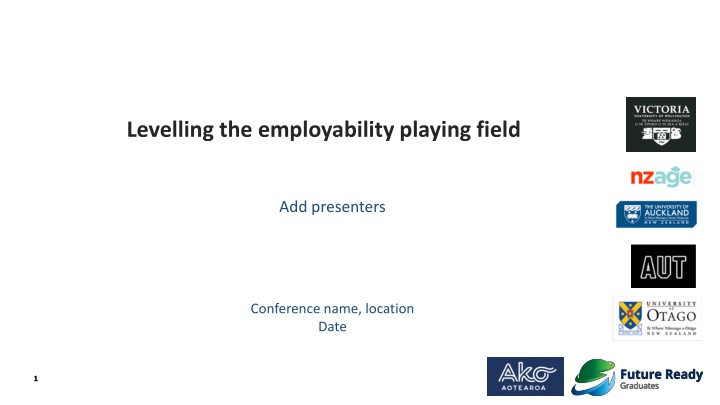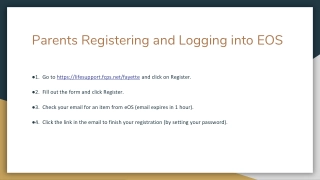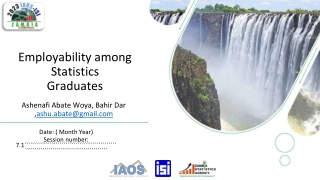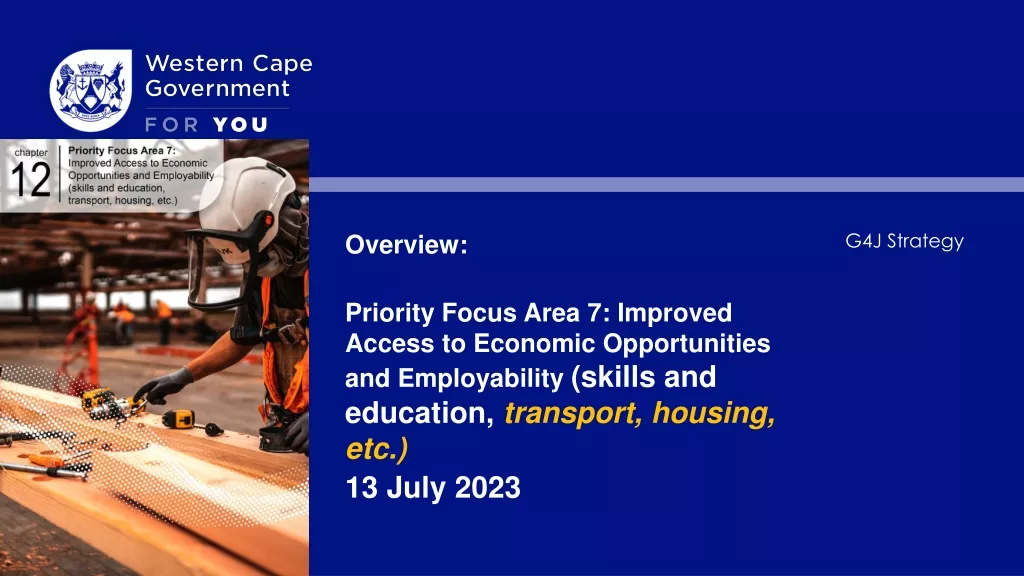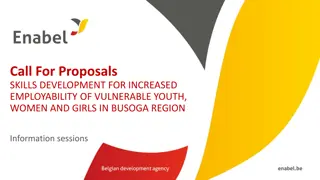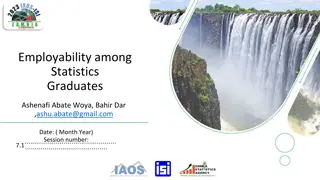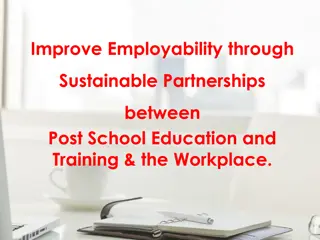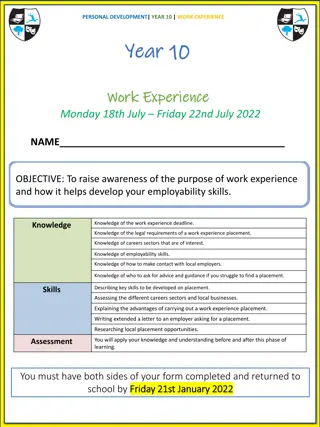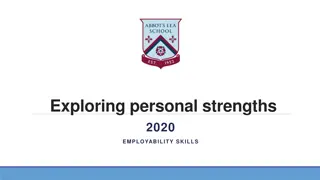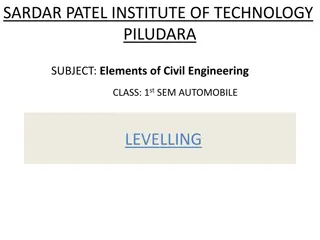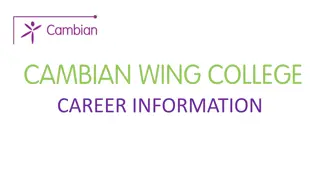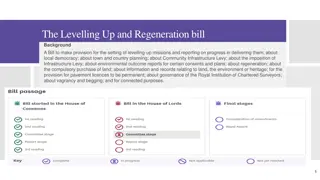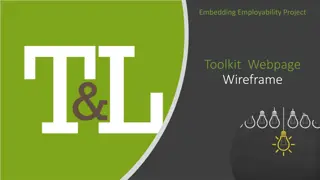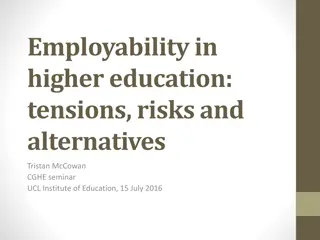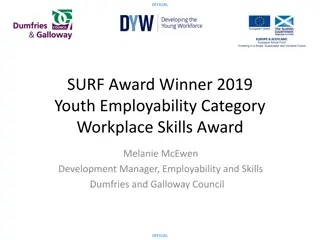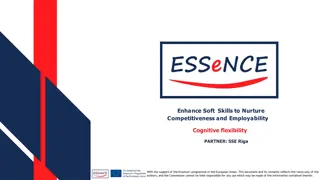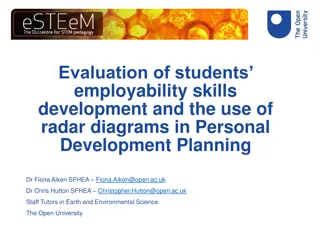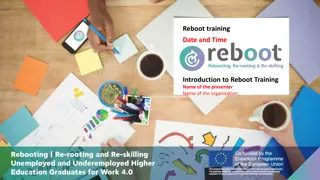Levelling the employability playing field
Workshop to identify future capabilities, address equity issues, and develop teaching approaches for diverse student groups in the employability sector. Activities include self-assessment, career modeling, and feedback sharing.
Download Presentation

Please find below an Image/Link to download the presentation.
The content on the website is provided AS IS for your information and personal use only. It may not be sold, licensed, or shared on other websites without obtaining consent from the author.If you encounter any issues during the download, it is possible that the publisher has removed the file from their server.
You are allowed to download the files provided on this website for personal or commercial use, subject to the condition that they are used lawfully. All files are the property of their respective owners.
The content on the website is provided AS IS for your information and personal use only. It may not be sold, licensed, or shared on other websites without obtaining consent from the author.
E N D
Presentation Transcript
Levelling the employability playing field Add presenters Conference name, location Date 1
Workshop overview In this workshop, we will: Identify capabilities that students need for their future lives and careers Identify potential equity issues in educational and support services relating to employability Adapt existing and design new services and approaches to teaching and supporting diverse groups of students 2
Workshop approach Active learning using models to share our stories 3
Activity 1 What do students need? What capabilities do students need? Introduce yourself In one minute, write down capabilities you think students need for their future lives and careers 4
Activity 2 your career journey Using the materials in front of you, build a model that: Depicts your early career Demonstrates why and how you first embarked on your career path Describe your model to the rest of the group 5
Feedback Share your thoughts 6
Employability Personal Adaptability Career Identity Social Capital Human Capital Fugate, Kinicki & Ashforth (2004) 7
Our diverse study body Students from ethnic minority and indigenous groups Students from low SES groups First in family students Mature students 8
Employability outcomes Transition out of university into jobs that are less well paid than other students even when they have equal or better degrees (Lehmann, 2012; Reay, Crozier & Clayton, 2010; Redmond, 2006) Experience more trouble finding work (Thomas & Jones, 2007; Wilton, 2012) Modest career aspirations (Lent & Brown, 2013; Strauss, Griffins & Parker, 2012) 9
The NZ context Transition out out Transition Bridge Bridge Retain Retain 10
The NZ context Why? Transition out out Transition Bridge Bridge Retain Retain How can we bridge the gap? 11
Activity 3 prompting questions What are the biggest challenges these groups of students face? How can we better support these students? Bring your ideas together into one tertiary landscape. 12
Feedback Share your thoughts 13
Thank you! Questions? Comment? Feedback? 15
References Fugate, M., Kinicki, A. J., & Ashforth, B. E. (2004). Employability: A psycho-social construct, its dimensions, and applications. Journal of Vocational Behavior, 65(1), 14 38. Lehmann, W. (2012a). Working-class students, habitus, and the development of student roles: a Canadian case study. British Journal of Sociology of Education, 33(4), 527-546. Lent, R. W., & Brown, S. D. (2013). Social cognitive model of career self-management: Toward a unifying view of adaptive career behavior across the life span. Journal of counselling psychology, 60(4), 557. Reay, D., Crozier, G., & Clayton, J. (2010). Fittingin or standingout : working class students in UK higher education. British Educational Research Journal, 36(1), 107-124. Redmond, P. (2006). Outcasts on the inside: graduates, employability and widening participation. Tertiary Education and Management, 12(2), 119-135. Strauss, K., Griffin, M. A., & Parker, S. K. (2012). Future work selves: how salient hoped-for identities motivate proactive career behaviors. Journal of Applied Psychology, 97(3), 580. Thomas, L., & Jones, R. (2007). Embedding employability in the context of widening participation. York, UK: Higher Education Academy. Wilton, N. (2012). The impact of work placements on skills development and career outcomes for business and management graduates. Studies in Higher Education, 37(5), 603-620. 16
